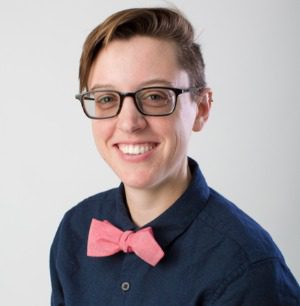Scientists from Earlham College are returning to Iceland this month to detect subterranean archeological structures left by the nation’s earliest settlers using gear made on campus. The National Geographic Society selected this project for funding in 2020, but the project was delayed by a year out of concern for the COVID-19 pandemic.
Professors Charlie Peck in computer science and Emmett Smith in biology are leading the project in collaboration with Icelandic archeologists. The two will use drone, sensor and machine-learning technologies to search for buried foundations, walls and graves.


“Our primary goal is to support the archeological community, specifically those who have identified an area where they want to relatively quickly, inexpensively and non-intrusively survey for human-made points of interest,” Peck says about the project. “Using modified off-the-shelf commercial drones, we have developed tools that are very good at analyzing and making a 3D rendering out of 2D images.”
Support from the National Geographic Society will help Peck and Smith support excavations in progress at Stöð, a remote farming community of 200 people, and Skálanes, a nature reserve, in eastern Iceland. Water currents on Iceland’s eastern fjord region arrive from Norway, making it a home to many Norse sites. Archaeologists working at Stöð have discovered ancient artifacts, including a Roman coin, which could indicate that the site was once a trading post.
“Up until now the community had supported this work by literally having bake sales to hire archeologists to work at the site,” Peck says. “This is a large valley that’s been a farm field for a very long time now, and no one is interested in digging the entire field up. The farmers use the land to make their living. That’s where we come in.”
The National Geographic Society is supporting Earlham for the first time, but Peck and Smith are hopeful it won’t be the last. Iceland, with its melting icecaps, is a unique location to analyze soils because it’s a relatively young country, geologically speaking, at only 17 million years old. Smith, in particular, is interested in ways DNA exists in the environment, particularly soils, and the growing use of extracting microbial and ancient DNA from ancient soils.
“Emmett and I are taking techniques that people have been able to do in only a couple of places in the world, with some very specific preconditions having to do with temperature and moisture levels of the samples over time, and developing variations on those techniques that could be used in other settings,” Peck says. “The problem with archeology and DNA extraction is that typically you have to find bone for it to work. That might not be the case here. We are on a mission to learn similar types of things about the historical context from endogenous DNA just left in the soil.”
Smith has already begun this work with support from Earlham’s endowed funds, and recently presented research at Brown University’s State of the Field—The Ancient DNA Revolution in Archeology Conference.

Among the professor’s findings are traces of DNA from cranberry and henbane, two plants believed to be transported to Iceland by Norse explorers. An ongoing student-faculty collaborative research project has also identified what may be ancient sheep DNA in the soils of a known sheep field and settlement at Skalanes. Further, the samples taken at the archaeological site at Stöð has identified what may be ancient DNA from crops raised by Norse settlers there.
If these results are confirmed, they will establish soil-based ancient DNA analysis as a viable strategy for Icelandic archaeology work and open the door for further research.
“If we can prove that what we’re seeing is DNA from 1,200 years ago, and we think we’re getting close, we can say a lot about who was living there—not just what they were eating or what they brought with them,” Smith says. “If we discover human DNA from that time period, that could be really important to a number of people and scientific disciplines. Not the least of whom being those who still live in that valley, the original people who fundraised to get this excavation started.”
Peck and Smith have been working together on research in Iceland for five years, but Peck’s engagement with the country dates back to 2012 with a request from a geologist colleague in Tennessee. Peck is an applied computer scientist with more than 30 years of experience working with colleagues in physics, biology, chemistry, geology and archeology to craft hardware and software solutions for their domain problems.
The Tennessee geologist asked Peck to develop some simple gear to measure the amount of hydrogen sulfide emitting from fissures near volcanic substructures in Iceland, he said. In achieving that, Peck said, “We quickly learned that they needed more than our equipment. They wanted our help. I put together a team of students and joined them.
“While we were there, we fell in love with the place,” he said. “We fell in love with the people, the culture, the physical surroundings and all the different kinds of science you can do there.”
Since that serendipitous beginning, interdisciplinary teams of Earlham students have been traveling to the island each year to conduct field research and explore the country’s culture. The annual excursion is now fully funded by the Epic Advantage, Earlham’s signature experiential learning initiative that offers an internship or research experience to every student before graduation.
“Our goal is to look at problems that aren’t typically solved by any one discipline,” Peck says. “If you look at the big, interesting problems—climate change and others—no one discipline owns these. These are things that have to be approached by people who come from a variety of disciplines working together to find an answer. This makes for a powerful teaching and learning environment.”
Media contact
Brian Zimmerman
Director of media relations
Email: [email protected]
Phone: 765.983.1256